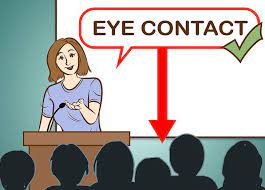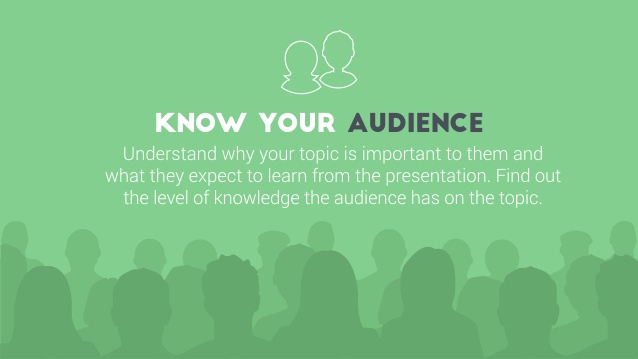The Critical Do’s and Don’ts Speakers Need to Know Before Delivering a Talk
There are quite a number of do’s and don’ts and today I will give the most common ones – on engagement, connection and delivery.
Standing in front of an audience and having them listen to you is an honor and a privilege. You want to give them YOUR BEST.
Nerves go hand in hand with speaking, so learn to be ok with that “…even the most experienced of speakers still get butterflies in their tummies while before an audience…” Advised my Mentor in Public Speaking. “All speakers still get nervous!” He adds
Fear of public speaking, or Glossophobia, can be debilitating.
But with these helpful tips, you will surely be able to deliver your story; to create engagement and deeper connections.
DO’S
- DO visit your venue before hand so you know what stage/platform you are speaking on. Know your environment. Correct anything with the organizer that doesn’t work.
- DO know your audience – know who you will be speaking to. Their culture, beliefs, food, clothing, level of education, challenges and strengths.
- DO whatever you need to do to get grounded and calm before your talk – meditate, relax, eliminate distractions, listen to music. Invite positive energy.
- DO wear clothes you feel good in – It’s not always about wearing a suit. Be certain that the person before the mirror looks good and wears a smile.
- DO Practice, Practice, Practice – Practice your talk, Practice your stance, Practice using no hands, its old but still true… “practice makes perfect“
- DO start and finish on time. There is nothing that turns off an audience as the speaker who eats on their time.

- DO use your whole stage – elevate yourself. It shows leverage and that you are the expert. If the stage is tiny, work the room.
- DO grab your audience’s attention starting with your first sentence. Be a free spirit.
- DO eliminate distraction.
- DO be conversational and relaxed. You are at home!
- DO find a comfortable place for your hands – preferable by your side.
- DO speak clearly–make sure you pronounce and articulate your words crisply. Open, forward and ease your voice.
- DO vary your pitch, rate, tone, and volume. It breaks monotony.
- DO use bullet points when writing your script – it’s easier to remember that way.
DO use language that is appropriate for the audience. - DO engage the whole room – move/turn your body. Include everyone (all sides of the room, balconies, back, front)
- DO make eye contact with people. This is very KEY! Lock into a few pairs of eyes. The audience can tell a scared pair of eyes.
- DO find key people in the room you can single out that will engage with you during your talk. This aids in building a rapport with the audience.
- DO seed your offer throughout the talk.
- DO have a final button/bow or one last dose of emotion.
- DO be YOURSELF – Do what’s right for you and HAVE FUN!!
DON’TS
DON’T go on stage without preparing yourself mentally, emotionally and physically.
DON’T write out a whole script in story form (and read from it). “Public speaking is NOT Public reading!!!”
DON’T read your slides or stare into your manuscript if you must use one.
DON’T try to impress with jargon. “This noun can also refer to language that uses long sentences and hard words. If you say that someone’s speech or writing is full of jargon, this means you don’t approve of it and think it should be simplified.”
DON’T be monotone or boring. Speak from your heart… It helps!
DON’T rush – keep a comfortable pace.
DON’T do Jazz Hands by waving your hands all over the place.
DON’T do the change in your pocket (best not to have your hands in your pocket at all)
DON’T chew gum as you speak.
DON’T “lecture” at the audience.
DON’T read your speech unless the occasion demands otherwise.
DON’T stare at the floor, the ceiling, the window, or the door. Maintain eye contact.
DON’T leave out any audience members (remember all sides of the room and balconies)
DON’T rely on Technology (PowerPoint, Wifi, Video, etc). Technology busts can happen and then what? Know how to function with or without technology.
DON’T worry or apologize if you “mess up.” Chances are the audience did not even notice.
DON’T allow Q&A until the end of the talk because when your talk is in full flow you have the audience engaged and hanging on every word. If someone raises his or her hand to ask a question, be kind to let them know they can do so after the talk.
DON’T step/squash an emotional outburst (laugh, sigh, sad moment, gulp). Pause for reactions – let them happen. They are part of feedback.
DON’T leave the audience hanging. Have a compelling Call to Action (aka an offer)
DON’T get all up in your head and be your own worst critic.
LASTLY… DON’T hesitate to Register for Training Sessions/ Online with afroheritageconsult.org or give Us a call +254 792 763 211/ +254 748 883 004
Again, HAVE FUN! Just like anything, practice makes excellence. It all starts with a polished Soul Story and then getting yourself out there. Every time you do it, it will feel easier and more in more flow. Now get out there and FEAR NOT 2 SPEAK!
Please follow and like us:



